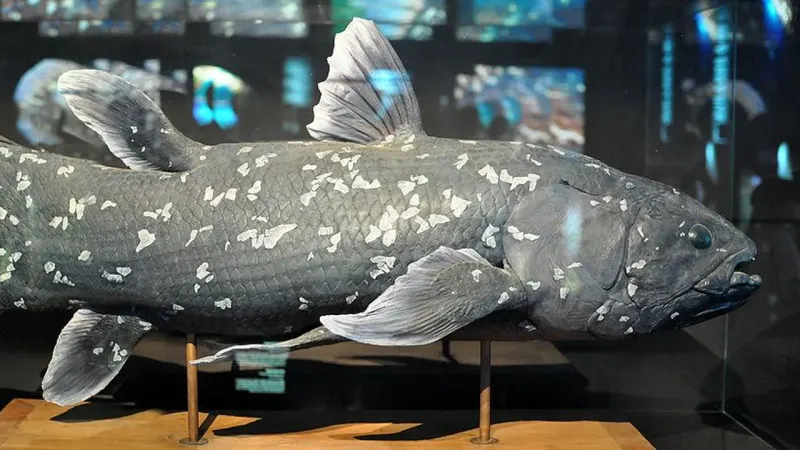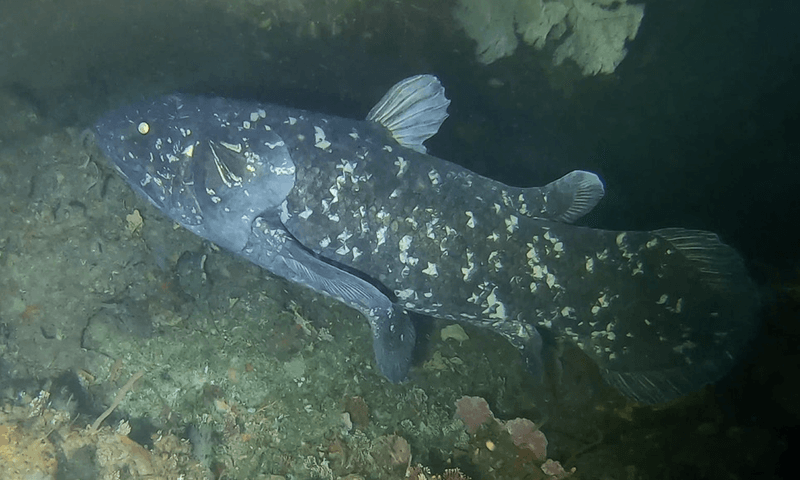It was supposed to be gone forever. A relic of the dinosaur age, the coelacanth vanished from Earth’s history books 70 million years ago—or so we thought. Then, out of nowhere, it showed up. Alive. Swimming. Looking like it crawled straight out of a prehistoric painting. This isn’t just a fish—it’s a ghost. A deep-sea mystery with lobed fins, a grumpy frown, and a talent for dodging extinction like it’s a party trick. And now? We finally have photos. Real, high-resolution proof that this ancient wonder is still lurking in the ocean’s shadows, flipping science on its head with every slow-motion tail flick. Ready to meet the fish that broke every rule and came back from the grave? Let’s dive in.
The Coelacanth’s Hidden Depths

Once believed to have vanished with the dinosaurs, the coelacanth was unexpectedly found alive in 1938. This ancient fish, with its distinctive lobe-finned structure, has intrigued ichthyologists worldwide. What makes the coelacanth truly fascinating is its resilience and adaptation to deep-sea environments, often residing over 600 meters underwater. Its discovery was akin to finding a living fossil, providing a glimpse into prehistoric marine life.
The coelacanth’s existence challenges the notion of extinction, reminding us of nature’s unpredictability. As a result, this fish has become a symbol of hope and curiosity.
Unexpected Discovery in Madagascar

In a surprising twist of fate, the coelacanth’s existence was unveiled near the Comoros Islands, off Madagascar’s coast. The initial discovery was made by a local fisherman, sparking worldwide scientific interest. Researchers soon flocked to the region, eager to study this enigmatic creature in its natural habitat.
This momentous find turned Madagascar into a hotspot for marine exploration, drawing attention to its rich biodiversity. The coelacanth’s unexpected emergence in these waters has reshaped our understanding of marine life in this region.
The Coelacanth’s Unique Physiology

With a body resembling that of a prehistoric predator, the coelacanth’s anatomy is unlike any other. Its lobed fins, resembling limbs, have captivated researchers interested in evolutionary biology. These fins suggest an evolutionary link between aquatic and terrestrial creatures.
Additionally, the coelacanth’s ability to move its head independently of its body sets it apart from other fish. This rare feature provides new insights into anatomical adaptations over millions of years.
Its physiology has become a focal point for scientists investigating the evolutionary trajectory of vertebrates.
The Role of Coelacanth in Evolutionary Studies

The coelacanth’s surprising survival offers invaluable insights into evolutionary history. Researchers have long considered this fish a missing link in the transition from sea to land. By studying its genetic makeup, scientists hope to unravel the mysteries of vertebrate evolution.
The coelacanth provides a living model to test theories about early life forms and evolutionary processes. Its presence challenges established timelines and encourages a reevaluation of biological assumptions. This fish is more than a curiosity; it is a bridge to understanding life’s ancient past.
Conservation Efforts for a Living Fossil

Preserving the coelacanth is a priority for conservationists who recognize its ecological and scientific significance. Initiatives are underway to protect its natural habitat from environmental threats, including overfishing and pollution.
Educational programs aim to raise awareness about this unique species and promote sustainable fishing practices. The coelacanth’s story inspires a broader conversation about ocean conservation and the importance of protecting our planet’s remaining wonders.
Those committed to its survival see it as a living testament to nature’s resilience.

